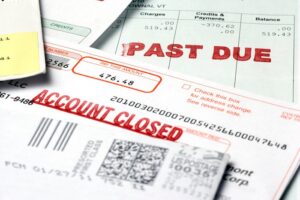Beginning next winter, low- income customers of Dominion Energy Virginia or Appalachian Power Company will be eligible to have their monthly bills capped under a new state financial assistance program.
The income cut off to qualify for Virginia’s new Percentage of Income Payment Plan (PIPP) assisting low income households with their electric bills is the same as the threshold for the long-standing Low Income Home Energy Assistance Program (LIHEAP). So LIHEAP beneficiaries will likely be the first enrolled in the new program later in 2023.
PIPP was authorized by the 2020 General Assembly as one aspect of the omnibus Virginia Clean Economy Act. It was then amended and clarified by a 2021 bill with an expectation it would begin providing benefits by 2023. That law set the qualification cutoff at 150% of the federal poverty level. Draft guidelines to get the process going are now posted on the Virginia Department of Social Services website.
An erroneous report on my part on June 27 that the process had stalled prompted several people to provide some details about what was happening off the radar. It was the Virginia Poverty Law Center (a former client of mine) that proposed the effort and did the basic research to come up with this approach, somewhat copied on Ohio’s program. It has been involved in the development process.
The federally funded LIHEAP program is much broader, covering various forms of energy from just about any provider. If a Dominion or APCo customer is already qualified for LIHEAP, those benefits will be counted first before any PIPP benefit is calculated.
How many customer households are we talking about? No one provided a number, but approximately 5-7% of residential customers of those two utilities qualify for LIHEAP. If those customers are paying down back bills, an arrearage, PIPP funds will also be used to reduce those balances before they start to subsidize bills going forward. If customers are in a budget payment plan, which eliminates the peaks and valleys in monthly billing, that is likely to also keep them under the threshold for PIPP.
By statute, the goal of PIPP is to keep a household from paying more than 6% of its qualifying income toward its monthly bill if it doesn’t use electricity for heat, and 10% if it does use electricity for heat. So a qualifying household with $2,500 a month in income would not have to pay more than $150 per month if not using electricity for heat, or $250 per month if using electric heating. Any additional cost is paid to the utility by PIPP.
An interesting wrinkle on this is that if the drive to eliminate natural gas stoves, water heaters and furnaces takes hold, and gasoline cars also disappear, more and more households will hit or pass those electric bill thresholds. The undisputed reality is that energy costs in any form – not just electricity – usually consume a far greater share of the incomes of lower middle- and lower-income families.
PIPP participants will be offered an energy audit if they haven’t already had one, and encouraged to participate in various existing conservation or energy efficiency programs. Whether PIPP dollars will subsidize those is not all that clear yet, but it seems not at first.
Where does the PIPP money come from? Well, from all the other customers of Dominion and APCo, and even from electricity users in those monopoly territories who have opted for competitive providers. There has been a standing charge on monthly bills to fund PIPP since late 2021, but only at a nominal amount to pay the costs for developing this plan.
Once the program gets rolling, the State Corporation Commission will be asked to increase the charge, which is collected by another of those ubiquitous rate adjustment clauses, or riders. The charge is a flat rate per kilowatt hour of usage, with all customer classes paying the same rate. This is an advantage to residential customers, since on many other bill elements the commercial and industrial users with high demand pay a lower per-kWh amount.
The 2021 legislation put a cap of $100 million per year on the PIPP funds to be collected from Dominion’s customers and $25 million per year from Appalachian’s. Again, no change in the rider is likely until after the program kicks into gear in November (and after the election that month).
This will only add to the overall trend of rising rates flowing from the 2020 Virginia Clean Economy Act, with its mandatory move away from fossil fuels and their replacement with billions invested in wind, solar and battery projects. The SCC held a hearing yesterday on APCo’s latest set of VCEA project requests, with their associated increases in utility prices.
The Dominion households who qualify for PIPP will also be exempted from having to pay the monthly bill rider funding the offshore wind construction. That is also low now, but will explode when construction begins in earnest, and will get even larger and last even longer if the second wave of another 2.6 gigawatts of faceplate capacity is built.
If 7% of Dominion’s residential customers are paying nothing toward that every month, how much more will the rest of their ratepayers have to provide? If PIPP by itself provides a family only a tiny benefit, they will still want to get on the list to take advantage of this exemption.
The food stamp benefits, now called SNAP, are not funded by taxing other grocery store buyers more. The current federal LIHEAP is not funded with a tax on other electricity or natural gas customers (that is reserved for the Regional Greenhouse Gas Initiative, after all). The cost shifting underlying PIPP is not as egregious as what California is about to do, rolling out different electric rates based on income, but it remains a less than ideal funding method.


Leave a Reply
You must be logged in to post a comment.